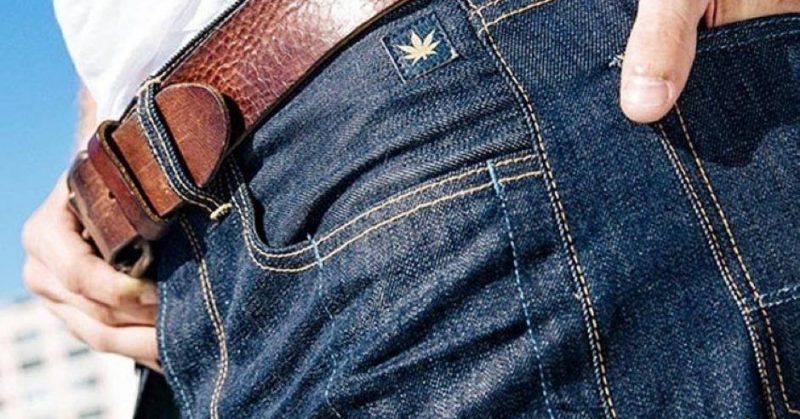Levi Strauss & co., an American clothing giant known worldwide for its brand of Denim jeans have found a way to make the super hemp plant to feel like cotton, and they are aiming to produce 100% cottonized hemp by 2025 [1]. Hemp requires far less water and chemicals to thrive and it grows a lot faster than cotton.
Entrepreneurship is largely about creativity and innovation, changing the game and seeing incredible opportunities where others don’t.
With the legalization of the Hemp Farming Act in the U.S. in 2018, several businesses have come up with dozens of different hemp-derived CBD products including oils, dietary supplements, bath bombs, and even chewing gum. Generally, the hemp industry exploded in a few months since everyone was coming up with something unique to offer. In 2017, farmers only grew 23,000 acres of hemp. After the bill was passed, production tripled to a shocking 77,000 acres across the country.
The hemp industry has had a difficult time thriving in many places, especially in the U.S., due to its similarity to marijuana, caused by the presence of the psychoactive compound tetrahydrocannabinol (THC). However, hemp is so low in concentration of this compound that and is non-psychoactive [2].
Hemp as a better alternative to cotton
Hemp is a globally recognized super crop. This means that every part of the plant has use somewhere, making it an economic gold mine. Its fibers are used to make paper, fabric, textiles, and ropes. The seeds are a highly nutritious super-food, rich in protein, fiber, and healthful fatty acids. The plant’s oil is used as both a renewable, low carbon fuel and an ingredient in many pharmaceutical solutions.
In March last year, in collaboration with the Outerknown clothing label, Levi’s debuted a pair of Denim jeans and jacket made from a blend of 31% hemp and 69% cotton, but it feels 100% pure cotton. It has always been known that a cotton-like fiber could be derived from hemp, but the process has never been easy or economically feasible.
Cotton fibers are gotten from the shoot of the plant in the form of a bud that’s easy to work with. Hemp fibers, on the other hand, are embedded in the tall and lean trunk of the plant. However, Levi’s has found a way to make hemp fibers soft and able to blend with pure cotton.
“It’s a longer, stiffer, coarser fiber,” Levi’s head of global product innovation, Paul Dillinger, told Business Insider [3]. “It doesn’t want to be turned into something soft. It wants to be turned into rope. “It’s great that it’s resonating with the consumer, but it’s more important that it’s helping to future-proof our supply chain,” he said.
Hemp requires less water, fewer pesticides, and is a wonderful plant for replenishing nutrients in the soil. The cultivation of hemp is far more eco-friendly and sustainable than cotton. Levi’s was desperate to find an alternative to cotton as a raw material as it was becoming increasingly difficult to access freshwater for its cultivation. The hemp-bending technology unexpectedly came through after years of research and while Levi’s is not revealing its partners in the breakthrough, they’ll be ready to deploy a marketable version in three years, made of 30% hemp and 70% cotton.
A gradual process
While the company is optimistic about a future where hemp completely replaces cotton, they are not promising a spontaneous overhaul of industries. The transition would take many years to be completed, but when Levi’s finally finds the technology to make 100% hemp-derived clothing: “We’re going to go from a garment that goes from 3,781 L of freshwater, 2,655 of that in just the fiber cultivation,” Dillinger said, according to data collected by the Stockholm Environmental Institute. “We take out more than 2/3 of the total water impact on the garment. That’s saving a lot.”
Dillinger explains that the company is not particularly worried about how the material would thrive in the market. There’s barely any difference between cottonized hemp and pure cotton, and customers mostly just want high-quality clothing to wear. It would probably be an easier sell since hemp is more environmentally friendly to cultivate than cotton.
“So often there’s the assumption that to purchase a sustainably-made product is going to involve a sacrifice, and that the choice is between something ethically made or something that’s cute,” he said. “You don’t have to sacrifice to buy sustainably.”
While Levi’s plans to roll out the first version in three years, research will continue into the technology to find a way to make hemp 50% of the cotton blend, and finally an overhaul of the production process where hemp is 100% utilized. Dillinger says that it five years, the company would hopefully debut “a 100% cottonized-hemp garment that is all hemp and feels all cotton.”
They are not looking to produce a hastily-tinkered fabric that would only sell by sentiments as a high-end “sustainable” material. “Our intention is to take this to the core of the line, to blend it into the line, to make this a part of the Levi’s portfolio,” he said.

